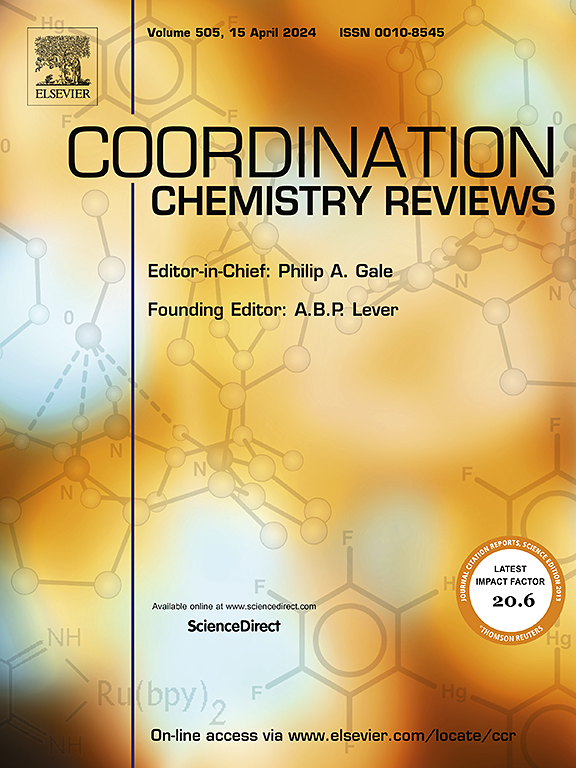In-situ characterization technologies and theoretical calculations in carbon dioxide reduction: In-depth understanding of reaction mechanisms and rational design of electrocatalysts
IF 20.3
1区 化学
Q1 CHEMISTRY, INORGANIC & NUCLEAR
引用次数: 0
Abstract
The electrochemical reduction of carbon dioxide (CO2RR) enables the transformation of CO2 into valuable chemicals and fuels using renewable electricity, offering a crucial pathway toward addressing the global energy crisis and achieving carbon neutrality. Traditional theories of catalyst stability and activity can be complicated by the dynamic reorganization of catalysts under operating circumstances, which is a significant issue in this subject. To address this, advanced in-situ technologies and theoretical calculations reveal the dynamic evolution of catalysts and intermediates during CO2RR. In this review, we systematically analyze the integration of in-situ characterization technologies with theoretical calculations which underscores their critical role in understanding the mechanisms of CO2RR and facilitating the design of efficient catalysts. Subsequently, we systematically summarize the recent advances in-situ studies and theoretical calculations on probing the reaction mechanisms during the CO2RR. In this perspective, we can deepen our understanding of reaction mechanisms by combining advanced real-time monitoring and theoretical calculation approaches that relate the dynamic evolution of variable response environments to theoretical evolutionary models. Finally, this review seeks to enhance the understanding of reaction mechanisms and provide guidance for the rational design of efficient catalysts through the integration of in-situ characterization techniques and theoretical calculations.

求助全文
约1分钟内获得全文
求助全文
来源期刊

Coordination Chemistry Reviews
化学-无机化学与核化学
CiteScore
34.30
自引率
5.30%
发文量
457
审稿时长
54 days
期刊介绍:
Coordination Chemistry Reviews offers rapid publication of review articles on current and significant topics in coordination chemistry, encompassing organometallic, supramolecular, theoretical, and bioinorganic chemistry. It also covers catalysis, materials chemistry, and metal-organic frameworks from a coordination chemistry perspective. Reviews summarize recent developments or discuss specific techniques, welcoming contributions from both established and emerging researchers.
The journal releases special issues on timely subjects, including those featuring contributions from specific regions or conferences. Occasional full-length book articles are also featured. Additionally, special volumes cover annual reviews of main group chemistry, transition metal group chemistry, and organometallic chemistry. These comprehensive reviews are vital resources for those engaged in coordination chemistry, further establishing Coordination Chemistry Reviews as a hub for insightful surveys in inorganic and physical inorganic chemistry.
 求助内容:
求助内容: 应助结果提醒方式:
应助结果提醒方式:


